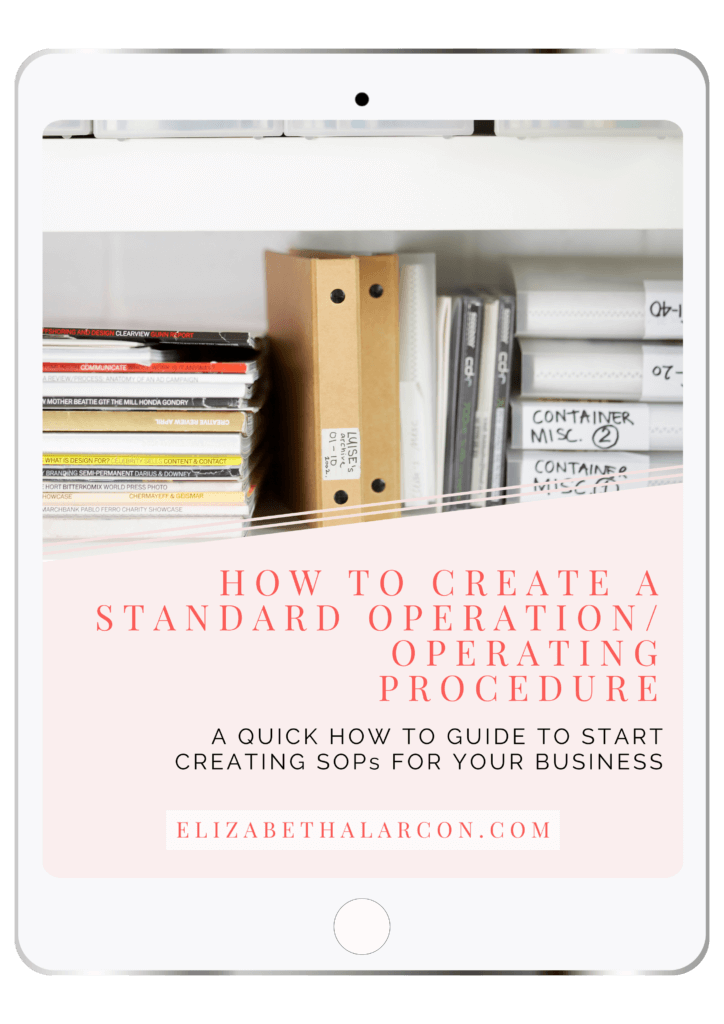From Chaos to Control: The Simple Secret of Taking One Step at a Time
It's easy to feel overwhelmed and lose control in the whirlwind of life. But fear not, for the secret to navigating through this chaos lies in the simple yet profound act of taking one step at a time. This approach helps you transform panic into productivity and chaos into control by focusing on doing what needs to be done next. So, let's embark on this journey together and unlock the potential of prioritizing, one step at a time!
Unpacking Panic and Loss of Control
The universal experience of chaos is a reality we all grapple with in our technologically driven, fast-paced world. It's as if we are caught in a whirlwind of constant information, obligations, and demands that never end. Consequently, panic sets in, a raw and visceral response to the perceived loss of control.
This feeling isn't isolated to a select few; it is a shared struggle that unites us all in our human condition. At some point, each of us questions how to regain the reins and navigate through the tumultuous storm of life.
From a psychological perspective, the sensation of panic and loss of control can be traced back to our innate fight-or-flight response. When confronted with an overload of stimuli, our system initiates a cascade of stress hormones, primarily adrenaline, preparing our bodies for a perceived threat.
However, in our modern world, these ‘threats' often take the form of looming deadlines, cluttered inboxes, and cumulative responsibilities, rather than tangible physical dangers. This mismatch triggers a sense of panic and a loss of control, leaving us helpless and stressed.
Why Stressful Speed is Not the Solution
In our society, there's a common misconception that when faced with an overwhelming schedule or workload, the solution is to push harder, work faster, and sacrifice sleep for productivity. This ‘forced productivity' often stems from a fear of falling behind, a desire to regain control over the chaos of life. We're constantly under the illusion that if we could speed up, we might be able to outpace the chaos. But this approach is not only futile; it's also detrimental to our health and well-being.
The human brain is not designed to function under relentless stress. Our cognitive resources are finite and require periods of rest and relaxation to replenish. When we overextend ourselves in the name of productivity, we diminish our capacity for creative and critical thinking, impair our memory, and increase our susceptibility to errors. Furthermore, forced productivity often leads to burnout, a state of physical, emotional, and mental exhaustion that can seriously affect our health and quality of life.
Instead of succumbing to the ‘hurry sickness' pervasive in our culture, we pause and reassess our approach to productivity. While it's tempting to equate busyness with productivity, the two aren't synonymous. True productivity lies not in the number of tasks we can tick off our to-do list in a day but in the quality of our work and our ability to maintain a sustainable pace that respects our need for rest and recovery. Remember, the objective is not to confront chaos with frantic haste but to navigate it with purposeful mindfulness.

Managing Panic for Holistic Well-being
The ripple effects of this state of panic are not just mental but also physical. Research has shown that prolonged exposure to stress hormones can lead to various health issues, including heart disease, hypertension, and weakened immunity.
It can also lead to mental health problems such as anxiety and depression. Bearing these impacts in mind, it becomes clear that learning to manage chaos is not just about improving our day-to-day functioning but also crucial for our overall well-being.
When life overwhelms, the natural inclination is to panic and become overwhelmed. This can lead to paralysis, where we fear the prospect of trying to take on too much all at once. It's easy to enter into a cycle of spiraling anxiety as one problem becomes compounded upon another without any real solution in sight.
Addressing the challenge of chaos and learning how to prioritize our actions is the key to regaining control. The solution, surprisingly, isn't as complex as you might think. It's about focusing on the present moment and taking one step at a time.
It's Okay Not to Get Everything Done
Perhaps one of the hardest, yet most profound lessons we need to learn is this: no matter how many productivity hacks we employ, how many lists we make, or how efficiently we manage our time, we will not get everything done. And that's perfectly okay.
Our to-do lists are perpetually expanding, as are our expectations and responsibilities. Accepting the inevitability of incompletion is a liberating mental shift, a sign of maturity and wisdom. It lessens the pressure we put on ourselves and allows us to focus on what truly matters.
So, the next time you're caught up in the chaos, feeling overwhelmed because you haven't crossed off everything on your to-do list, breathe. Take a moment to reflect and understand that it's okay not to get it all done. The sun will still rise, the world will continue to turn, and everything will be fine. Remember, it's about taking one step at a time and prioritizing what needs to be done. Embrace this perspective, and you will find your path from chaos to control.

Understanding the Power of Prioritization
When faced with many tasks and limited time, understanding the power of prioritization becomes pivotal. Prioritization is an ongoing process that aids in distinguishing between what's urgent, what's important, and what can wait. It's about identifying your ‘big rocks,' or priorities, and addressing them first.
Those who are successful at prioritizing understand that it's a crucial factor in managing daily tasks. They approach their day with a clear plan, identifying key tasks that require focus. This doesn't mean they ignore minor tasks but ensure that their energies are primarily invested in activities that align with their goals and produce the greatest impact.
Focusing on one task at a time is not merely about ticking off items on a list. It's about mindfully engaging in a task, pouring your energy into it, and delivering high-quality results. This is often called ‘deep work,' a state of flow where you're so engrossed in your task that everything else fades away.
With this approach, you're not just juggling tasks; you're making conscious decisions about where your time and energy are best invested. It's a shift from being reactive to proactive, and it can dramatically increase your productivity and sense of control. So, the next time you're feeling overwhelmed, remember the power of prioritization and its potential to transform chaos into control. Prioritize, focus, and do the next right thing.
Practical Strategies for Determining the “Next Right Thing” For Any Situation
Prioritization is a skill, and it's something you can learn with practice. You can use various strategies to determine the ‘next right thing' in any situation so you don't feel overwhelmed.
The first step is to clarify what needs to be done and why. This involves breaking down tasks into small steps and deciding the most important tasks. You can also use the Eisenhower Matrix to categorize tasks according to their urgency and importance, providing an immediate snapshot of what needs to be done first.
You could also employ the ‘one-three-five’ rule: choose one significant task, three medium-sized ones, and five small ones – making sure to tackle the most important tasks first. Similarly, you could use ‘time blocking’ to allot specific blocks of time for particular tasks. This helps keep focus and structure throughout your day.
Focusing on one task at a time, you can make conscious decisions about where your energies are best invested. This helps you avoid the feeling of being overwhelmed and leads to an increase in productivity and a sense of control.

The Power of the Next Right Thing
Amidst the chaos, prioritizing can be challenging. That's why taking things one step at a time is crucial. All you need to do is focus on what needs to be done next.
The concept of doing the “next right thing” is a powerful yet straightforward strategy that can transform our approach to dealing with chaos. It implies focusing on the present moment, taking one step at a time, and not getting overwhelmed by enormous tasks. Instead of juggling multiple tasks at once or worrying about the future, we concentrate on the immediate task. This approach simplifies our thought process, reduces anxiety, and boosts our confidence as we see ourselves progressing, one step at a time.
Putting the “next right thing” into practice is as simple as it sounds. It's about identifying the next immediate action that needs to be taken, focusing on it completely, and then moving on to the next action once it’s completed. For instance, if you have a big presentation coming up, the “next right thing” could be starting your research, then creating an outline, and then working on the slides. The daunting task suddenly becomes less intimidating by breaking down the task into manageable chunks and focusing on one piece at a time.
However, the “next right thing” isn't just about productivity or task management; it's also about responding to life's challenges with wisdom and calmness. It's a reminder that every journey, no matter how long or difficult, starts with a single step. Even though we might not have all the answers, or the road ahead appears uncertain, focusing on the “next right thing” gives us a sense of direction and the courage to move forward. It's a liberating approach that helps us navigate from chaos to control, one step at a time.
- Identify the Next Action: Instead of seeing your situation as an overwhelming whole, break it down into smaller pieces. What is the very following action you need to take? This could be as simple as sending an email, making a phone call, or even taking a few moments to breathe. Focus on that one action and ignore the rest for now.
- Complete the Task: Once you've identified your next action, do it mindfully. Put aside thoughts, worries, and distractions, and concentrate on the task. This focus will improve the quality of your work and reduce the sense of panic.
- Celebrate the Completion: After finishing the task, take a moment to acknowledge your accomplishment. This can be a small celebration, but the importance of recognizing your progress cannot be overstated. It reinforces positive behavior and boosts your confidence to face the next task.
- Repeat: Now that you've completed one task, it's time to identify the next one. Repeat the cycle, and soon you'll find that you've made significant progress.
The process, as simple as it seems, has profound effects. It allows us to turn panic into productivity, chaos into control and transforms the daunting into the doable. When life's demands whirl around you, remember to center yourself and focus on the next best step.
Conclusion
So, the next time you find yourself in a swirl of havoc, remember this powerful principle: Focus on the ‘next right thing.' Don't let your thoughts run wild, envisioning all possible outcomes or overloading yourself with numerous tasks. Instead, concentrate on that one next step. Using this strategy, you can improve your productivity, ease your anxiety, and transform the perception of chaos into a sense of control.
Remember that moving forward isn't about being the fastest, no matter how chaotic or stressful situations become. It's about recognizing your ability to take control, one step at a time. When you feel overwhelmed, take a deep breath, identify the next right thing, and do it. As you practice this over time, you'll discover the profound power within you to handle life's chaotic moments and transform them into opportunities for growth and progress. So, keep going. Your next right thing awaits you.
THIS SITE USES AFFILIATE LINKS. THERE’S NO EXTRA COST TO YOU, BUT I RECEIVE A SMALL COMMISSION WHEN YOU USE THEM.
PIN ME!













💁🏻♀️ Community Guidelines
To ensure a positive and respectful environment for everyone, please take a moment to review our Community Guidelines. Following these guidelines helps us maintain a safe space for all.